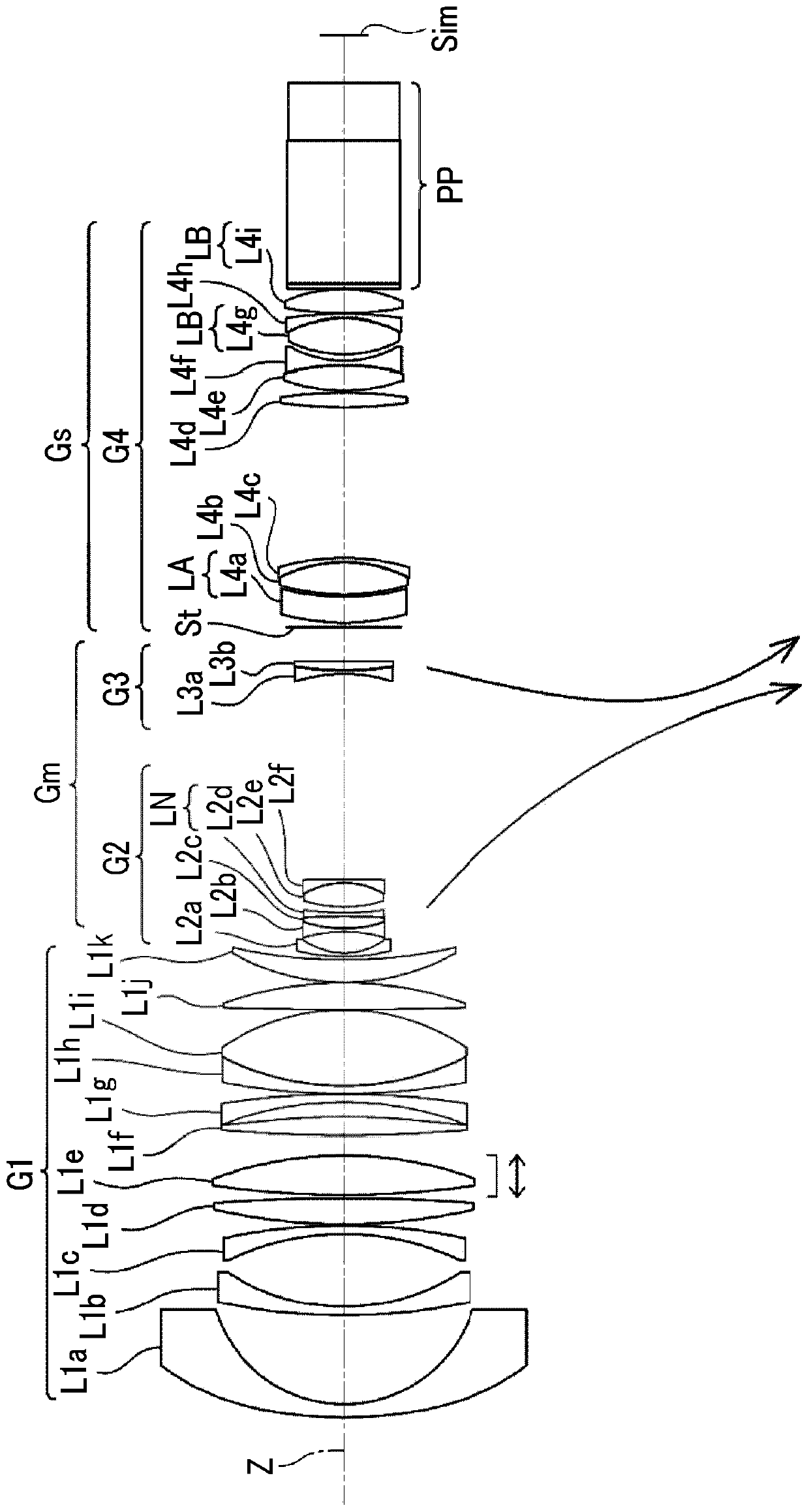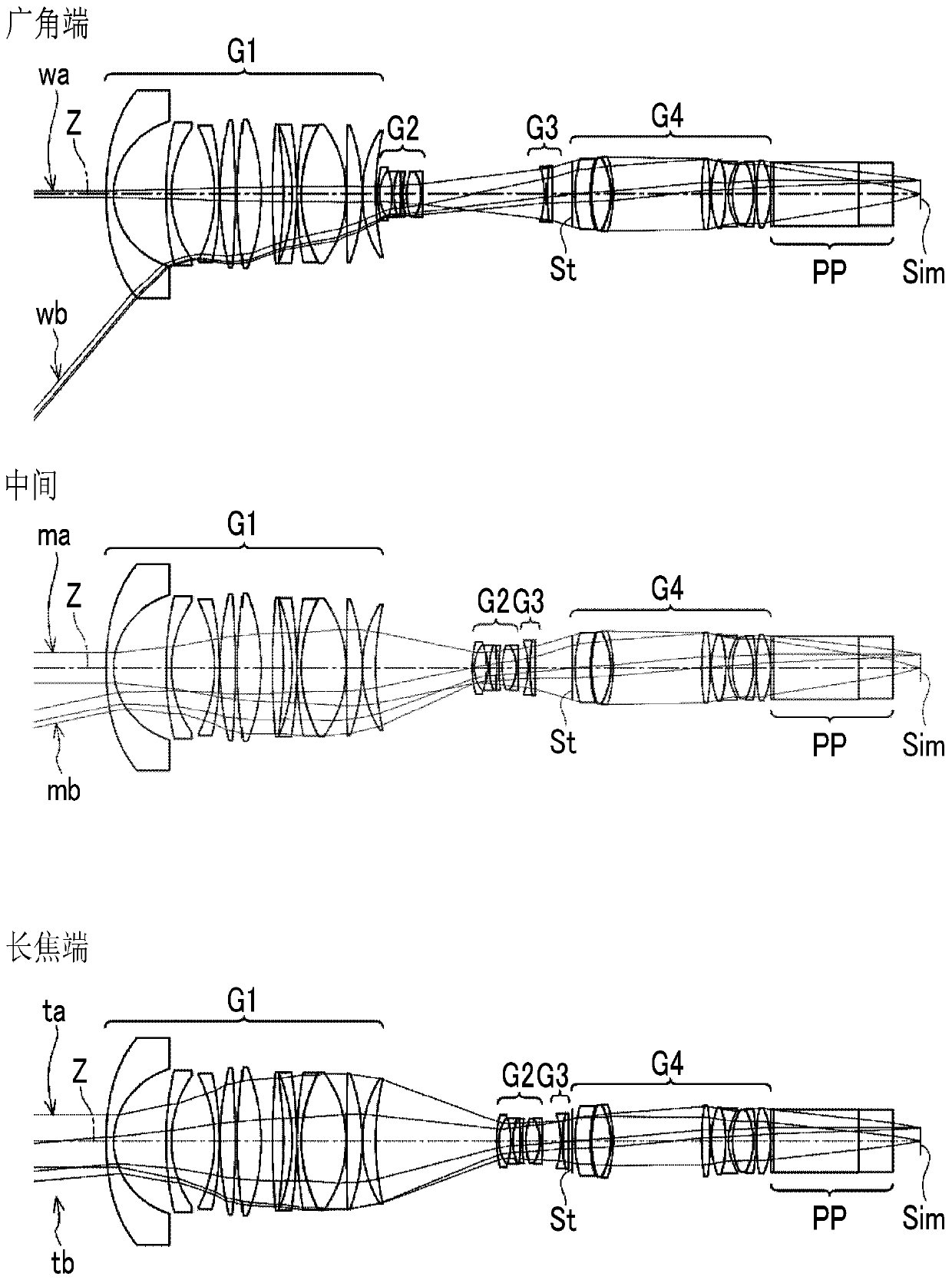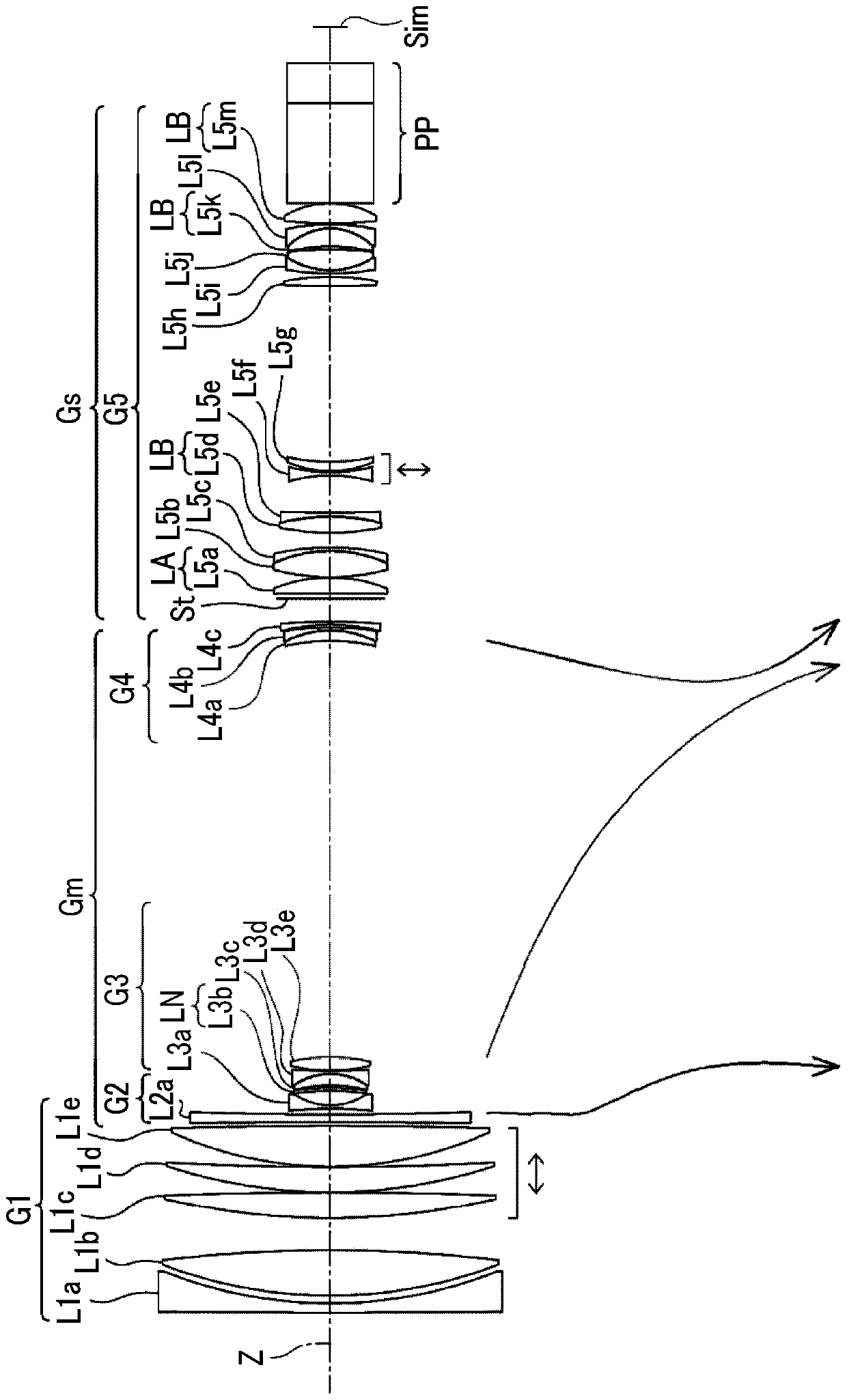Zoom lens and imaging apparatus
A zoom lens and lens technology, applied in optical elements, instruments, optics, etc., can solve the problems of insufficient suppression and insufficient miniaturization, and achieve the effect of good change in chromatic aberration
- Summary
- Abstract
- Description
- Claims
- Application Information
AI Technical Summary
Problems solved by technology
Method used
Image
Examples
Embodiment 1
[0133] A sectional view showing the structure of the zoom lens of Example 1 is shown in figure 1 In , its illustration method and structure are as described above, so a part of repetitive description is omitted here. The zoom lens of Embodiment 1 includes, from the object side toward the image side, a first lens group G1 having positive refractive power, a second lens group G2 having negative refractive power, a third lens group G3 having negative refractive power, and a fourth lens group G3 having positive refractive power. Lens group G4. The middle group Gm includes the second lens group G2 and the third lens group G3. The subsequent group Gs includes a fourth lens group G4. When zooming, the first lens group G1 and the fourth lens group G4 are fixed relative to the image plane Sim, and the second lens group G2 and the third lens group G3 change the distance between adjacent lens groups to move along the optical axis Z .
[0134] The first lens group G1 includes 11 lense...
Embodiment 2
[0162] A sectional view showing the structure of the zoom lens of Example 2 is shown in image 3 middle. The zoom lens of Example 2 includes, from the object side toward the image side, a first lens group G1 having positive refractive power, a second lens group G2 having negative refractive power, a third lens group G3 having negative refractive power, and a fourth lens group G3 having negative refractive power. Lens group G4 and a fifth lens group G5 with negative refractive power. The middle group Gm includes the second lens group G2, the third lens group G3, and the fourth lens group G4. The subsequent group Gs includes a fifth lens group G5. When zooming, the first lens group G1 and the fifth lens group G5 are fixed relative to the image plane Sim, and the second lens group G2, the third lens group G3, and the fourth lens group G4 change the distance between adjacent lens groups while moving along the optical axis Z.
[0163] The first lens group G1 includes five lense...
Embodiment 3
[0178] A cross-sectional view showing the structure of the zoom lens of Example 3 is shown in Figure 4 middle. The zoom lens of Example 3 includes, from the object side toward the image side, a first lens group G1 having positive refractive power, a second lens group G2 having negative refractive power, a third lens group G3 having negative refractive power, and a fourth lens group G3 having negative refractive power. Lens group G4, fifth lens group G5 with negative refractive power, and sixth lens group G6 with positive refractive power. The middle group Gm includes the second lens group G2, the third lens group G3, the fourth lens group G4, and the fifth lens group G5. The subsequent group Gs includes a sixth lens group G6. When zooming, the first lens group G1 and the sixth lens group G6 are fixed relative to the image plane Sim, and the second lens group G2, the third lens group G3, the fourth lens group G4, and the fifth lens group G5 change the positions adjacent to e...
PUM
 Login to View More
Login to View More Abstract
Description
Claims
Application Information
 Login to View More
Login to View More - R&D
- Intellectual Property
- Life Sciences
- Materials
- Tech Scout
- Unparalleled Data Quality
- Higher Quality Content
- 60% Fewer Hallucinations
Browse by: Latest US Patents, China's latest patents, Technical Efficacy Thesaurus, Application Domain, Technology Topic, Popular Technical Reports.
© 2025 PatSnap. All rights reserved.Legal|Privacy policy|Modern Slavery Act Transparency Statement|Sitemap|About US| Contact US: help@patsnap.com



